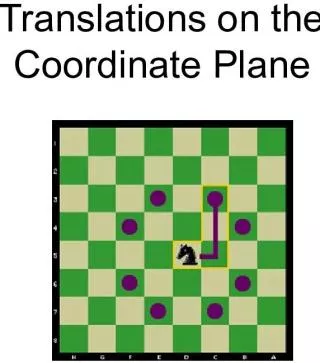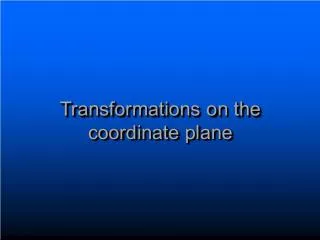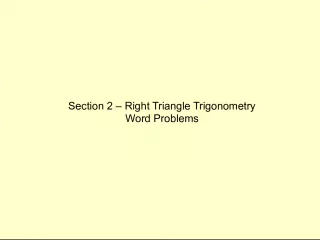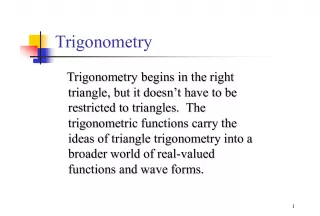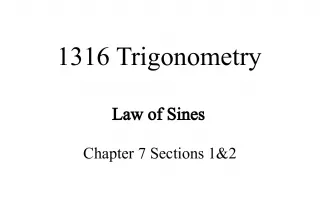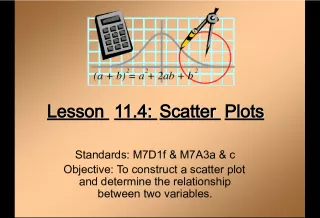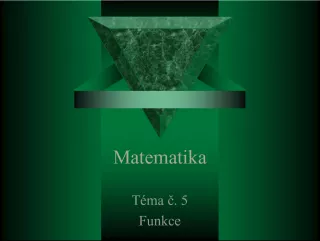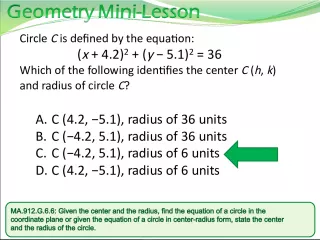Trigonometry in a Plane
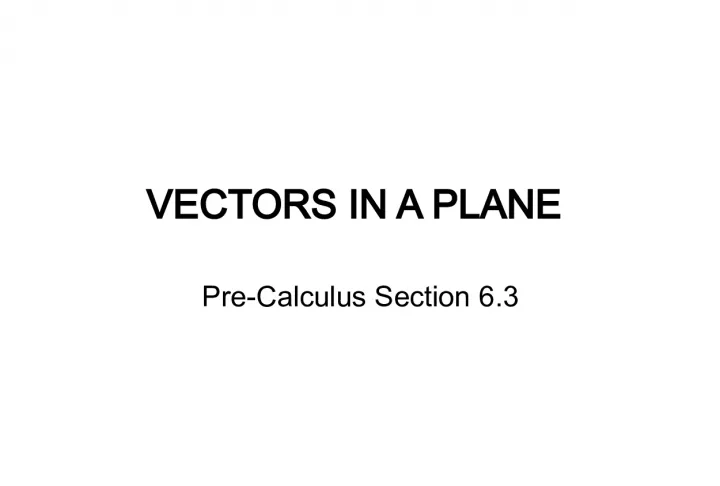

This Pre Calculus section covers vectors in a plane and teaches students to apply trigonometry to determine unknown angles and sides in right triangles, use the law of sines and the law of cosines, find the area of a triangle, and solve a variety of applications and word problems. Meets CA content standards.
- Uploaded on | 2 Views
-
 emily
emily
About Trigonometry in a Plane
PowerPoint presentation about 'Trigonometry in a Plane'. This presentation describes the topic on This Pre Calculus section covers vectors in a plane and teaches students to apply trigonometry to determine unknown angles and sides in right triangles, use the law of sines and the law of cosines, find the area of a triangle, and solve a variety of applications and word problems. Meets CA content standards.. The key topics included in this slideshow are . Download this presentation absolutely free.
Presentation Transcript
1. VECTORS IN A PLANE Pre-Calculus Section 6.3
2. CA content standards: Trigonometry • 12.0 Students use trigonometry to determine unknown sides or angles in right triangles. • 13.0 Students know the law of sines and the law of cosines and apply those laws to solve problems. • 14.0 Students determine the area of a triangle, given one angle and the two adjacent sides. • 19.0 Students are adept at using trigonometry in a variety of applications and word problems.
3. OBJECTIVES • Represent vectors as directed line segments • Write vectors in component form • Add and subtract vectors and represent them graphically • Perform basic operations on vectors using scalars • Write vectors as linear combinations of i and j • Find the direction angle of a vector • Apply vectors to real-world problems
4. Vector • Directed line segments • Named by initial point and terminal point (like a ray, in geometry) Ex: PQ Q P
5. • Vectors have direction and magnitude • Magnitude = length • Given the endpoints of a vector use the distance formula to find its magnitude
6. • Vectors with the same direction and magnitude are equal. • Vectors can also be named using a single, bold, lowercase letter Ex: u =PQ
7. Given P=(0,0) Q=(3,4) R=(4,3) S=(1,2) T=(-2,-2) a =PQ, b =RP, c =ST, d =QP which vectors are equivalent? d c b a
8. component form • Standard position – initial point at origin • Component form – use terminal point to refer to vector v v y v x
9. • Zero vector, 0 = < 0,0 > • Unit vector
10. Component form: general position • Remember equal vectors are determined by direction and magnitude – not location • Rewrite in standard position
11. vector operations: scalar multiplication • Scalar – number • To multiply a vector by a scalar – multiply each component by that scalar ex
12. Vector operations: addition • To add vectors, add their components Ex:
13. vector operations: addition • Visually, vectors can be added using the parallelogram law – Join vectors tail to head – Resultant vector is diagonal of parallelogram
14. ex Visually and algebraically find
15. Unit vectors • Remember a unit vector is any vector with magnitude of 1 • To find a unit vector in the direction of a vector v , divide the vector by its magnitude Ex. Find the unit vector in the direction of <5,-2>
16. Unit vectors • A vector can be written in terms of a directional unit vector and its magnitude Write in terms of the unit vector w/ the same direction
17. standard unit vectors Horizontal unit vector Vertical unit vector j i
18. • ALL vectors in a plane can be written as a combination of i and j • Ex. W has an intial point at (6,6) and terminal point (-8,3) write it as a combination of i and j W in component form is <-14, -3> As a combination of i and j, W = -14i – 3j
19. direction angles and vectors • Direction angle is from the positive x axis. • Use right triangle trig. v v y v x θ
20. Write each vector in component form 7 8 300° 30°
21. Write the magnitude and direction angle for each vector <-5,5>
